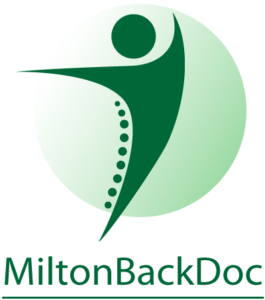Tendinitis (commonly misspelled as tendonitis) is inflammation or irritation of a tendon. The condition causes pain and tenderness just outside a joint. While tendinitis can occur in any of your tendons, it’s most common around shoulders, elbows, wrists, knees and heels.
You may recognize some common names for various tendinitis conditions such as:
- Tennis elbow
- Golfer’s elbow
- Pitcher’s shoulder
- Swimmer’s shoulder
- Jumper’s knee
WHAT ARE TENDONS?
A tendon is tissue that attaches muscle to bone. It is flexible, tough and fibrous and is designed to withstand tension. When muscles contract, they pull on tendons, which in turn pull on bones to produce joint motion. A ligament, while similar, extends from bone to bone at a joint, where a tendon extends from muscle to bone.
WHAT DOES IT FEEL LIKE?
Symptoms usually occur where the tendon attaches to a bone. Symptoms can include:
- pain which is aggravated with movement
- a feeling that the tendon is crackling or grating as it moves
- swelling, heat, and redness
- a lump may develop along the tendon
- if there is a tear or rupture, you might be able to feel a gap along the line of the tendon, and movement will be very difficult
Symptoms can last anywhere from a few days to several weeks or months. If symptoms persist beyond a few days, however, it is a good idea to see your physical therapist.
WHAT CAUSES TENDINITIS?
Although tendinitis can be caused by sudden injury, the condition is much more likely to develop by repeating a particular movement over a longer period of time. Most people develop tendinitis because their jobs or hobbies involve repetitive motions, which put repetitive stress on the tendons.
Using proper form and technique is especially important when performing repetitive sports movements or job-related activities. Improper technique can overload a tendon and lead to tendinitis.
There are some risk factors which increase the likelihood of developing this condition:
AGE: As we age, generally our tendons become more rigid, less flexible, and thus more susceptible to injury.
JOB: People who have jobs that involve repetitive motion, awkward positions, or forceful exertion are more susceptible to tendinitis.
SPORTS: Many sports require proper techniques to accomplish athletic feats, and poor form can easily cause injury in sports such as baseball, bowling, golf, running and tennis, among others. Tendinitis is particularly common in “weekend warriors,” people that play and exercise hard only on weekends, and may otherwise not be sufficiently conditioned.
HOW CAN I AVOID TENDINITIS?
To reduce your chances of developing tendinitis, here are a few suggestions:
- Ease up. Take it easy at first. Build up your activity level slowly. Avoid placing excessive stress on your tendons for prolonged periods. If you notice pain during a particular activity, take a break.
- Mix it up. If one exercise or activity causes you a particular, persistent pain, try something else. Varying your exercise activity can load different muscles, and decrease the impact on individual tendons. Try mixing in a low-intensity exercise with your high-intensity activity.
- Improve your technique. If your technique in an activity or exercise is not optimal, you could be stressing compensatory muscles, and thus risking tendon damage. Consider taking lessons or getting professional instruction when starting a new sport or using exercise equipment.
- Stretch. Take time after exercise to stretch in order to maximize the range of motion of your joints. This can help to minimize repetitive trauma on tight tissues. The best time to stretch is after exercise, when your muscles are warmed up.
- Prepare yourself. Warm up before you start your activity or exercise, this will prepare your muscles and tendons for the loads they will be subjected to. Additionally, strengthening the dominant muscles used in your activity or sport can help them better withstand stress and load.
- Use proper workplace ergonomics. If you are worried about the repetitive nature of your work, ask to have an ergonomic assessment of your workspace. For desk work, adjust your chair, keyboard and desktop as recommended for your height, arm length and usual tasks.
WHAT ARE MY TREATMENT OPTIONS?
In most cases, a few common things will be employed to help you recover:
REST: Taking a break, or reducing the amount that you use the painful joint will allow the inflammation to decrease. If stopping using the joint isn’t really an option, then reducing the intensity of your activity will likely help. In more severe cases, a splint or brace can be employed to help reduce movement.
ICE or HEAT: An ice pack can help to alleviate pain, and help to reduce swelling in the affected area. Ice is generally best applied to more recent injuries (ie. within 48 hours). Heating the area may also help to reduce pain, and is usually more effective than ice in a longer-term injury. Heat can help promote blood flow to the area and speed healing.
PHYSICAL THERAPY: Mobilizing and massaging the affected area may provide some pain relief, as well as accelerate the healing process. Acupuncture can also be employed to speed up healing. Your physical therapist may also recommend specific exercises, designed to stretch and strengthen the affected tendon and muscle.
ANTI-INFLAMMATORIES: Ibuprofen, and other non-steroidal anti-inflammatory drugs (NSAIDs) have been found to help to manage pain, however these do not treat the tendinitis itself.
REFERENCES:


